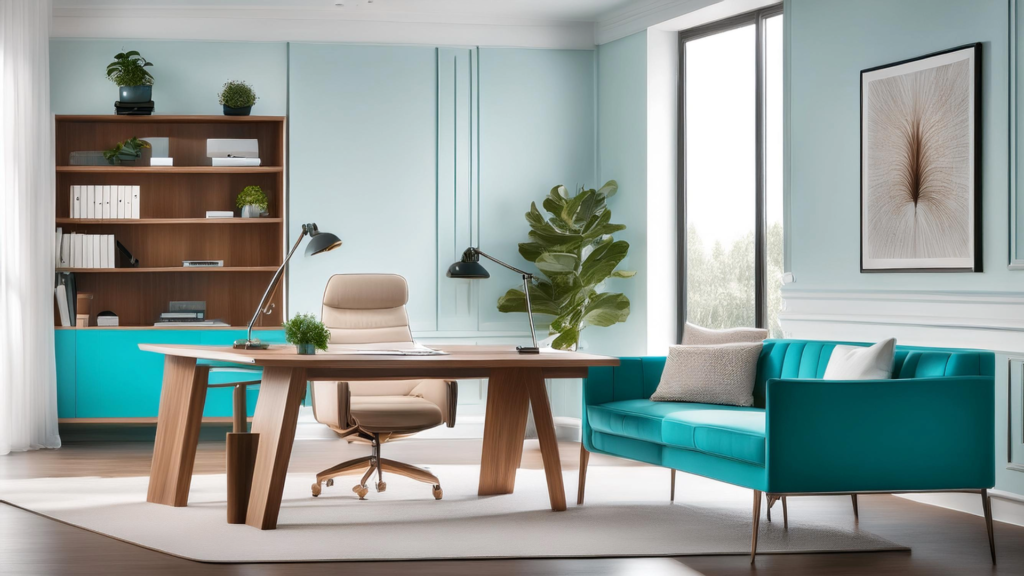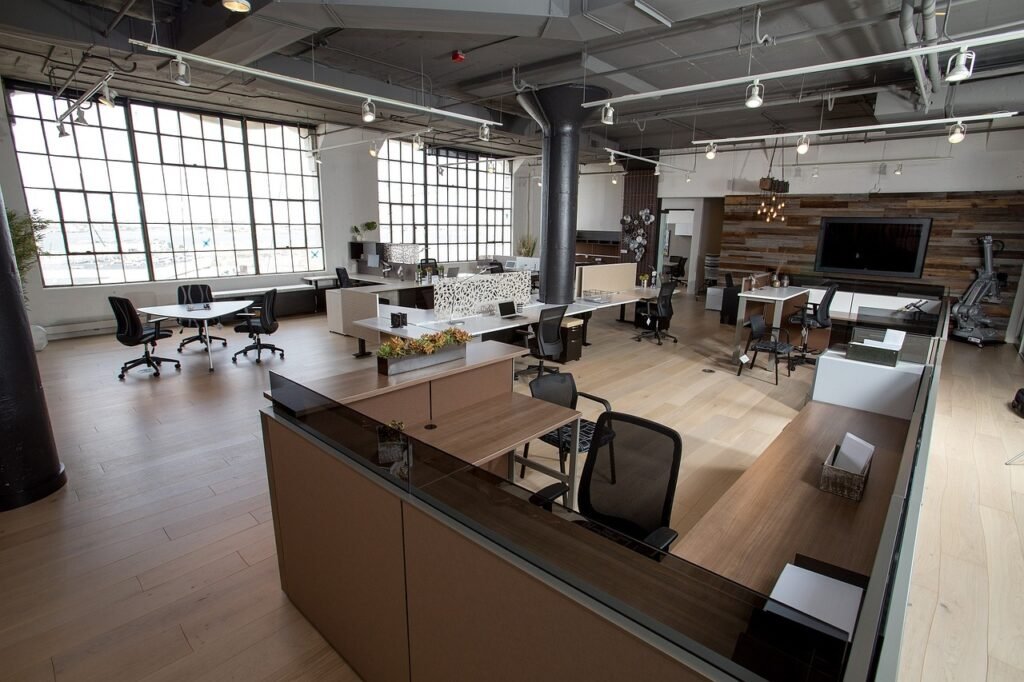Creating an efficient office involves a combination of thoughtful design, effective organization, and strategic planning. Whether you’re setting up a home office or optimizing a workspace in a corporate setting, an efficient office can significantly boost productivity, reduce stress, and enhance overall work satisfaction. While exploring office efficiency concepts make sure to keep all your needs in mind, even your habits such as wanting coffee to go before work. Remember to include the nuances of things you need and enjoy daily.
Here’s a comprehensive guide to achieving an efficient office setup.

1] Define Your Workspace Needs
Start by assessing your specific needs and tasks. Understanding what you require in your workspace will guide your decisions regarding layout, furniture, and equipment. Consider the nature of your work; whether it involves frequent meetings, extensive computer use, or creative tasks so you can tailor your office accordingly.
Action:
List essential tasks and the tools required for each.
Determine if you need areas for collaboration, storage, or specialized equipment.
2] Optimize Your Layout
An efficient office layout maximizes space, facilitates workflow, and minimizes distractions. Arrange your desk and furniture to support the flow of work. Position your desk where you have easy access to power outlets and natural light. If possible, avoid placing your desk in high-traffic areas to minimize interruptions.
Action:
Position your desk to face the door or a nice view, if possible.
Ensure there’s enough space to move easily around the room.
Create distinct zones for different tasks (e.g., computer work, meetings).
3] Invest in Ergonomic Furniture
Comfort is key to productivity. Invest in ergonomic furniture that supports proper posture and reduces strain. An adjustable chair with good lumbar support and a desk at the right height are crucial. Consider an adjustable standing desk if you prefer alternating between sitting and standing.
Action:
Choose an office chair with adjustable height, backrest, and armrests.
Ensure your monitor is at eye level to prevent neck strain.
Set your desk at a height where your elbows are at a 90-degree angle when typing.
4] Use Effective Storage Solutions
Clutter can impede efficiency, so effective storage is essential. Use a combination of shelves, drawers, and filing cabinets to keep documents and supplies organized. Consider vertical storage to maximize wall space and keep frequently used items within easy reach.
Action:
Use drawer organizers to keep office supplies sorted.
Install wall-mounted shelves or cabinets for additional storage.
Label files and storage containers to quickly locate items.
Don’t forget vertical storage!
5] Optimize Lighting
Great lighting enhances focus and reduces eye strain. Ideally, use a mix of natural and artificial lighting. Position your desk near a window for natural light, and use adjustable task lighting for focused work. Avoid glare on your computer screen by positioning it perpendicular to light sources.
Action:
Use desk lamps with adjustable brightness and angles.
Ensure overhead lighting is sufficient but not harsh.
Install window coverings to control natural light and reduce glare.
Look into various lighting types such as dimmable or color changing technologies.
6] Maintain a Clean and Organized Desk
A clean desk promotes a clear mind and efficient work habits. Keep only essential items on your desk to minimize distractions. Regularly clean and declutter your workspace to maintain an organized environment.
Action:
Clear your desk of non-essential items.
End each day by tidying up your workspace to start fresh the next morning.
Use desk organizers or trays to keep frequently used items accessible.
7] Integrate Technology Efficiently
Technology can enhance productivity but can also lead to clutter if not managed well. Use cable management solutions to keep cords organized and out of sight. Donate technologies you don’t use. Ensure that your technology setup—computers, printers, and other devices—is functional and accessible.
Action:
Use cable clips or sleeves to manage and hide cords.
Position your computer monitor at an appropriate distance to reduce eye strain.
Regularly update and maintain your technology to ensure efficiency.
Keep flexible technologies with long term potential.
8] Create a Personal and Inspirational Space
A personal touch can make your office an attractive place to work. Incorporate elements that inspire and motivate you, such as artwork, plants, or personal photos. These touches can enhance your mood and creativity.
Action:
Add personal items like photos, plants, or artwork that make you feel comfortable.
Ensure that these elements do not contribute to clutter or distraction.
Use colors and decor that align with your personality and work style.
Use design that is easy to clean or move if needed.
9] Ensure Good Acoustics
Sound can definitely impact your productivity sometimes. If possible, choose a quiet area for your office or use noise-canceling headphones if you’re in a shared space. Soft furnishings, such as carpets or curtains, can help absorb sound and reduce noise levels.
Action:
Use soundproofing materials or soft furnishings to reduce noise.
Position your office away from high-traffic or noisy areas if possible.
Consider colored noise machines or apps if external noise is a concern. (colored noises are white noise, pink noise, green noise etc).
Keep noise cancelling headphones if necessary.
10] Regularly Review and Adjust
An efficient office is not a static setup but one that evolves with your needs. Regularly review your workspace to identify areas for improvement. Make adjustments as your tasks or preferences change to maintain optimal efficiency and comfort.
Action:
Periodically reassess your workspace layout and storage solutions.
Stay adaptable and open to changes that enhance your productivity.
Seek feedback from yourself or colleagues on how to improve the setup.

Creating an efficient office involves more than just arranging furniture; it’s about designing a space that supports your workflow, minimizes distractions, and fosters productivity. By carefully considering your needs, optimizing your layout, investing in ergonomic furniture, and maintaining organization, you can create a workspace that enhances your efficiency and well-being. Regularly reviewing and adjusting your setup ensures that your office remains a functional and inspiring environment, ultimately contributing to your success and satisfaction.